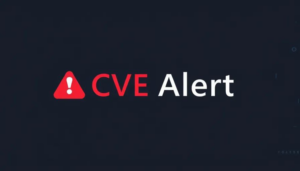CVE Alert: CVE-2025-32468 – SAIL Image Decoding Library – SAIL Image Decoding Library
CVE-2025-32468
A memory corruption vulnerability exists in the BMPv3 Image Decoding functionality of the SAIL Image Decoding Library v0.9.8. When loading a specially crafted .bmp file, an integer overflow can be made to occur when calculating the stride for decoding. Afterwards, this will cause a heap-based buffer to overflow when decoding the image which can lead to remote code execution. An attacker will need to convince the library to read a file to trigger this vulnerability.
AI Summary Analysis
Risk verdict
High risk of remote code execution via the BMPv3 decoding vulnerability, but exploitation is not shown as active in current SSVC/ADP indicators; remain urgent for exposed systems.
Why this matters
If an attacker can coerce a user to open a crafted BMP, they can gain arbitrary code execution in the affected process, potentially compromising data, integrity and availability. In environments where the library is embedded in image pipelines or server-side decoding, a successful exploit could precipitate lateral movement or be used to deploy further malware.
Most likely attack path
Attacker-controlled BMP delivered over a network context can trigger the issue, but user interaction is required to initiate exploitation. The attacker benefits from network delivery without initial privileges (PR:N), but gains full control of the compromised process (C/H, I/H, A/H) within the process scope, enabling potential follow-on actions if the process holds network capabilities or elevated privileges.
Who is most exposed
Applications and services that embed the SAIL Image Decoding Library for BMP decoding, including image processing servers, multimedia pipelines, and certain embedded devices, are most at risk—especially where image payloads may be delivered over networks or untrusted sources.
Detection ideas
- Crashes or hangs during BMP loading in the affected library.
- Logs showing unusual stride calculations or memory corruption messages.
- Network patterns involving delivery of BMPs to image-decoding services.
- Unexpected process behaviours or memory safety alerts after image processing.
- Anomalous shell or code execution indicators from the decoding component.
Mitigation and prioritisation
- Patch to the vendor-provided fixed version as a priority; verify deployment in staging before rollout.
- If patching is not feasible, sandbox the decoding component and run with least privilege; block or isolate network-derived BMP inputs; enable input validation and file-type checks.
- Consider disabling or segregating BMP decoding behind trusted workflows; implement application-layer checks for image sources.
- Change-management: coordinate with product teams, test in a controlled environment, and plan staged deployment.
- If KEV true or EPSS ≥ 0.5, treat as priority 1. Otherwise maintain high-priority remediation.
A considerable amount of time and effort goes into maintaining this website, creating backend automation and creating new features and content for you to make actionable intelligence decisions. Everyone that supports the site helps enable new functionality.
If you like the site, please support us on “Patreon” or “Buy Me A Coffee” using the buttons below
To keep up to date follow us on the below channels.


![Cobalt Strike Beacon Detected - 140[.]143[.]132[.]170:80 4 Cobalt-Strike](https://www.redpacketsecurity.com/wp-content/uploads/2021/11/Cobalt-Strike-300x201.jpg)
